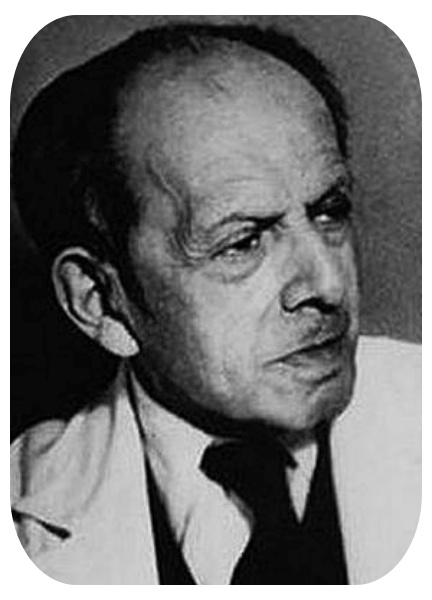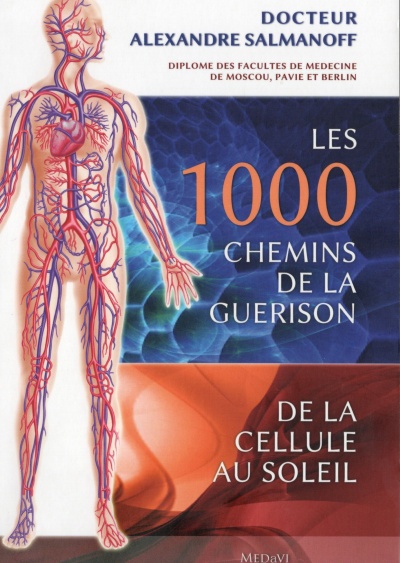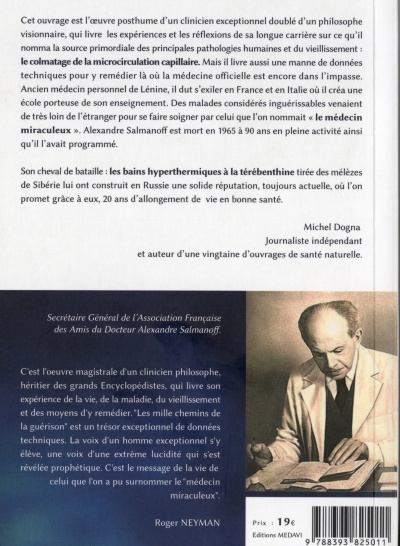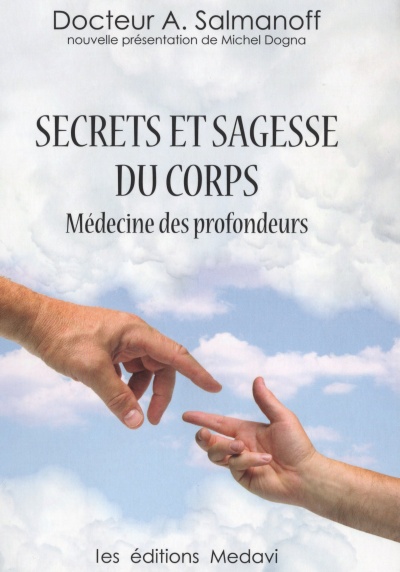
Dr Alexandre Salmanoff is the inventor of hyperthermic baths, which have a great action on our capillaries. The capillaries are a part of our blood system, linking the arterioles and venules. For example, they feed (food, oxygen, information), and remove (wastes, CO2) all the cells 15 microns around. Heating the whole body, capillaries are dilating and recover a right functioning, allowing the good cells living. In consequences, this treatment gives many years life to the body, slowing diseases and ageing.
History:
Alexander Salmanoff is born in Russia, in 1874 or 1875.
After first medicine studies in Moscow University, he went out of Russia to improve its first training. About 1905, he got already three University doctorates (Russian, German and Italian). Then, he stayed in Italy, where he managed an hospital in a thermal city. In these years, he already got there an international reputation.
During the first world war, he came back to Russia, where he managed military hospitals.
After the 1917 revolution, his work was recognized by the new government. Vladimir Lenin gave him the management of all the thermal cities of the country. There, he was in charge as well of tuberculosis treatment. The same year, he became the dedicated doctor of the Lenin’s family.
In this time, the therapy strategy consisted mostly in cold baths and hot and cold showers. Medication almost didn’t exist, only natural plant extracts, except aspirin, starting production by end of 19th.
The years going, he wanted to improve its training in thermal treatments, and Lenin allows him to visit foreign thermal cities. When Lenin died, time was not safe to come back to Russia, then he decided to stay abroad, in Berlin at first.
In 1936, he decided to move to France, and settled in Paris, working there till his death.
His inventions
Very interested in the Dr August Krogh capillaries discovery, he modified his cold bath way of curing and tested warm baths. Moreover, A. Salmanoff implemented complex bath oils to tune his new tool. To do so, he used several herbs oils, mixed with turpentine essences from Siberian larch trees. And he defined 2 kinds of bath oils, called “White” bath and ‘Yellow” one, with specific presumed effects. In conclusion, he found out that these kind of baths with his specific oils renewed the body, giving back to the people many years life.
Dr A. Salmanoff tested his therapy and cured people all along his life.
Just before his death, in the 1950’s, we wrote 2 books in French. These 2 books have been re impressed recently by Michel Dogna, Naturopath and medical writer. I thank him a lot for that job, which allows me to recover my health.
Alexander Salmanoff died in 1964, in Paris.
He was still practicing at 90.




